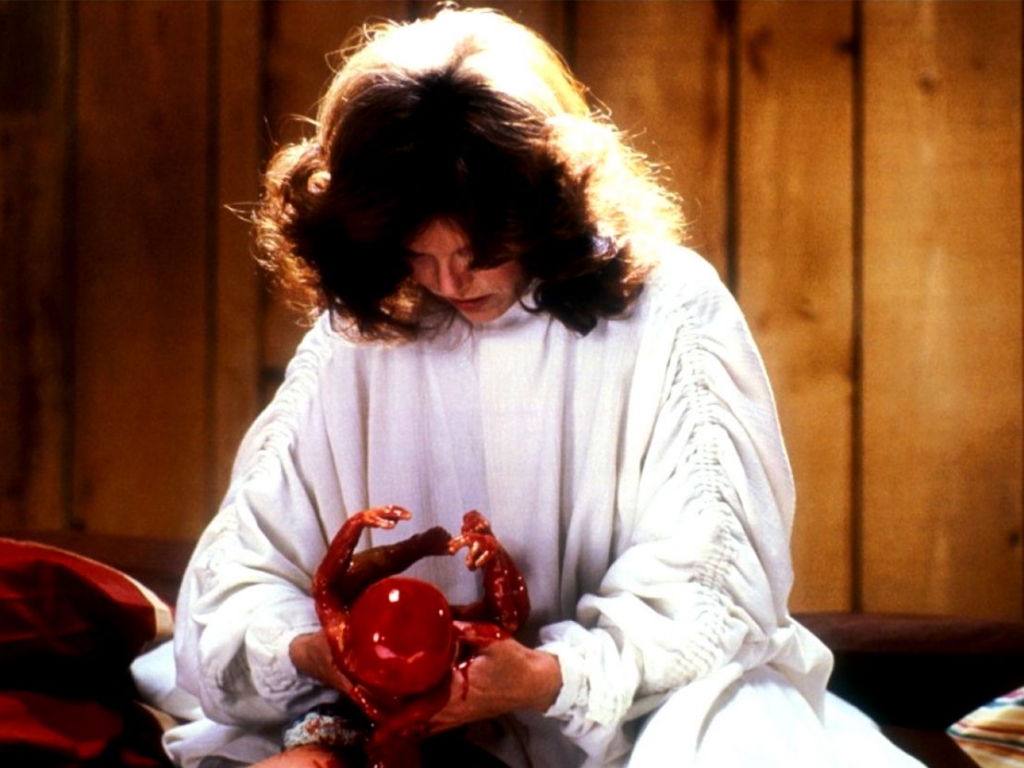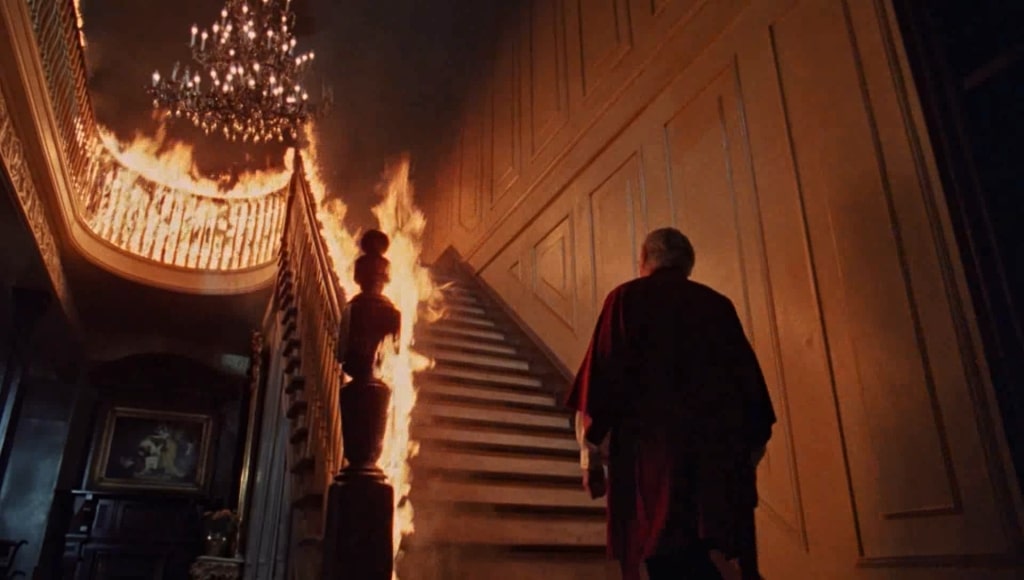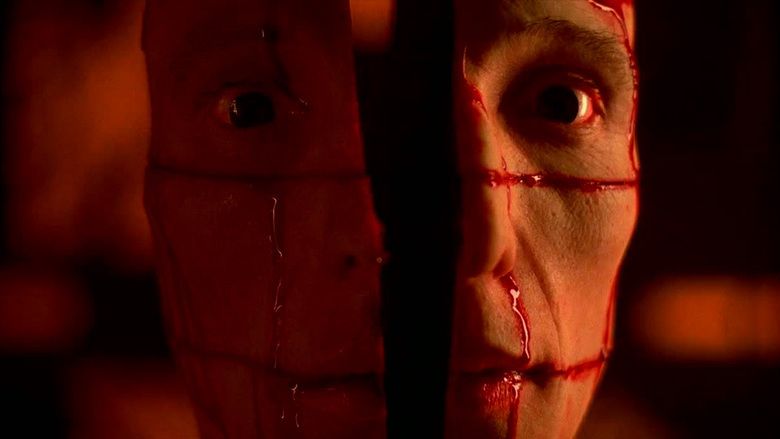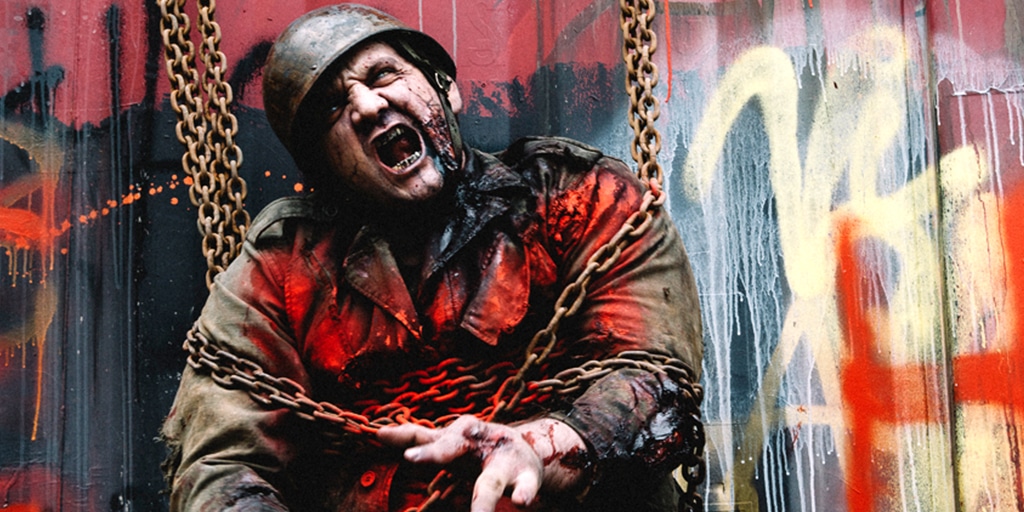As we near the end of our horror trip around the world, we visit our neighbor to the North to experience the best in Canadian horror.
A big thing happened in 1967. The Canadian government founded the Canadian Film Development Corporation (CFDC), which allocated 10 million to support the film industry.
Until then, Canada felt dominated by the UK (its former colonial master), southern neighbors, and even the French (Quebec’s population is 71.2 percent French). This multi-million allotment was described by the head of the CFDC as a “profitable artistic investment,” with the most profitable of investments inevitably not being awards-contenders but films of spectacle.
Movies with pulpy elements and dazzling special effects typically were those that promised pageantry and could lure in even the most casual of movie-goers… a recipe that promised horror would find its legs up in the North thanks to the likes of David Cronenberg, Bob Clark, and Ivan Reitman.
With films like Shivers (1975), Rabid (1977), The Brood (1979), and Scanners (1981), Cronenberg became an early face for Canadian horror with his unique and unforgettable (not to mention polarising) blend of science fiction, body horror, and psychological elements.
Though not exactly traditional screaming horror, a director like Ivan Reitman would inject some comedy into the genre with Ghostbusters in 1984 and Ghostbusters II five years later.
Preceding these was his 1973 grindhouse comedy-horror Cannibal Girls. Starring Eugene Levy (American Pie franchise) and featuring a plot true to the title, its marketing campaign warned squeamish audience members to close their eyes every time a bell rang during certain moments. Footage from this film appears in a cinema scene in Ghostbusters II as well as in the more recent Ghostbusters: Afterlife (2021).
Pivoting back to more visceral thrills, one year later (1974), Bob Clark gave us the enduring Black Christmas.
Black Christmas is a film that still does not exactly get the credit it deserves (especially when considering its influence on Halloween just four years later) and is historically credited with being one of the earliest slashers.
With it came a set of standards that would affect several other horror films to follow.
One of the most memorable techniques was the way much of the action is seen through the killer’s eyes. Viewers linger as he lingers; we see what he sees and ultimately become helpless bystanders to the slaughter.
Though Peeping Tom (1960) is credited with introducing the element of watching from the killer’s point of view, that film was more of a psychological study rather than a straightforward slasher like Black Christmas, a terror replete with a colorful arrangement of likable and relatable sorority sisters (and one hellaciously entertaining Housemother) lead by Hollywood icons Olivia Hussey (Romeo and Juliet, Death on the Nile, Psycho IV: The Beginning, as well as the It miniseries) and Margot Kidder (The Amityville Horror, the original Superman franchise, and Rob Zombie’s Halloween II).
A terrific cast, shockingly sinister script, and richly garish holiday set design help to cement Black Christmas with the reputation it deserves.
The now-archetypal image of a young girl receiving a taunting phone call conjures up echoes of Scream, and much like Neve Campbell’s Sidney refused to adhere to moralistic genre conventions… the girls of Pi Kappa Sigma refuse to conform to the standards of a conservative society. This is especially seen in the character of Barb, a brash and inappropriate hard-drinking mix of fantastically flirty energy, who is also featured in an attack sequence (involving a glass figure unicorn) edited together so masterfully that it elevates the film into a form of true artistry.
Now that we’ve got some history out of the way, it is time to take the plunge into exploring four of the best that Canadian Horror has to offer.
The Changeling (1980)
Contemporary audiences accustomed to rapid-fire editing and wall-to-wall action might have to check their ADHD at the mansion door to truly appreciate the lavish abundance of dread and spook factor absolutely permeating the entirety of The Changeling.
This sprawling and meticulously paced ghost story, as well as a murder mystery, challenges viewers to believe in supernatural existence.
To accomplish this, director Peter Medak relies less on eliciting terror from overt depictions of spectral hauntings and instead places the emphasis on the totality of horror displayed so strikingly on the faces of actors George C. Scott (The Exorcist III) and Trish Van Devere, the latter of which for her work won a Genie award (subsequently revamped in ensuing decades into what is now known as the Canadian Screen Awards).
Interestingly, both of these actors were married at the time of filming, which adds a lived-in and believable chemistry to their dynamic.
Much like Who Saw Her Die (1972), Don’t Look Now (1973), and even The Haunting (1963), Changeling dually operates as both a dramatic meditation on grief as well as a focused and effective furlough of isolating horror.
Largely taking place at a mansion believed to be haunted, proceedings are photographed with eerily composed segments of exploration, with the main character, John Russell, first arriving at the mansion with a wonderfully ominous roving camera shot, suggesting a portentous presence.
A quintessential haunted house offering, The Changeling is a remarkable film about the consequences of the tragedy and the unusual behaviors and motivations that occur as a result.
Setting this Canadian Horror against the backdrop of the supernatural makes it essential viewing for anyone who enjoys some grounded emotional elements mixed in with their scares.
CUBE (1997)
Next up on our Canadian horror excursion is the Vincenzo Natali-directed science-fiction-horror mindf*ck that is Cube, a dark and colorfully oppressive confection of paranoia, existentialism, and alienation.
Five strangers awaken, kidnapped, and placed into a cube-shaped room outfitted with fatal motion-detecting traps. Each room connects to a different room, all part of a continuously shifting maze-like structure. One individual asserts their belief that all five of them were specifically chosen for a reason.
As such, each uses their unique talents to speculate the best strategy to survive the traps and ultimately escape… with varying results.
Soon, it becomes a matter of too many cooks in the kitchen, with conflicts arising on how to best move forward.
A large part of the fun of Cube lies in the variety of the traps that each room yields and the suspense present in watching these characters test out their theories for outsmarting each room’s trap mechanism — leaving audiences with a fair amount of freak-out factor knowing there is a 50/50 chance that a trap may or may not be triggered.
The traps and the ensuing visceral mayhem are really what earns Cube its meal ticket, with its more science-fiction logic-based underpinnings providing ripe data for analysis and the traps offering a Saw-level style of entertaining carnage candy. One iconic scene even served as direct inspiration for a memorable kill in the first Resident Evil film adaptation.
This film wastes zero time getting viewers acquainted with the harsh nature and sudden finality of each trap, earning the rightful reputation it deserves as a nail-biting and visually stimulating great slice of Canadian Horror cinema.
PONTYPOOL (2008)
Zack Snyder’s Dawn of the Dead remake ushered in a zombie revival (and an over-saturation), arguably the most oddball result being Bruce McDonald’s Pontypool.
Based on the novel Pontypool Changes Everything, the events of the film take place in a small Ontario town. The most interesting aspect of this zombie film is that it is not exactly a zombie film. It’s a zombie film with lofty ambitions, operating on several levels, and uses its radio broadcast setting (which also happens to be situated inside a church) to play up classic Orson Welles-inspired horror, effectively toying with audiences’ exceptions and imaginations before ultimately spiraling into something entirely unpredictable and uniquely alarming.
Preceding any panic is a quick and disconcerting interaction the main character, radio jockey Grant Mazzy, has with a stranger, which then poses the question, ‘When do you call 911’? This simple yet thought-provoking query injects a social conscience into Pontypool’s lifeblood, commentary which has long been present and welcome in zombie cinema (especially thanks to George Romero) and what furthermore sets this film apart is the truly terrifying way that the contagion spreads.
Without spoiling it, the method of transmission is something that is just about unavoidable for any human — barring complete isolation.
Finally, any talk of Pontypool would be remiss without noting lead actor Stephen McHattie’s powerhouse performance as shock-jock Mazzy. His voice delivers sleek, gravelly goodness and is well-suited as a radio announcer. Nicely complimenting this energy is station manager Sydney Briar (Lisa Houle), who, with Grant, provides a nice bit of intriguing emotional tension to balance the more harrowing developments.
Additionally, technical assistant Laurel-Ann gets to play an audience avatar partly, admiring Grant’s controversial yet entertaining style of radio hosting. Played by Georgina Reilly (an actor who looks as if she could be Anna Faris’ sister), she is the youngest of the three principal characters and has a look that is more standard teen horror fare. But Laurel-Ann is more than meets the eye — being an Afghan war vet.
Details like this elevate the film as a whole into a story about real people with pasts rather than meat for slaughter.
Pontypool is by far one of the more out-there yet cathartically satisfying zombie films that will prompt rich afterthought and fantastical escape, even after the credits have rolled.
This Canadian Horror makes excellent use of its low budget, has phenomenal acting, a cool and unsettling visual style, and offers a threat so very disquieting in the way it poses relatable dilemmas for the audience.
Blood Quantum (2019)
Next up, and the final film in our little Canadian horror spotlight, is a decidedly more traditional zombie feature, 2019’s Blood Quantum. Director Jeff Barnaby dials up the social commentary and flesh-ripping to level 10 in equal measures.
Taking place at the Red Crow Indian Reservation, representation and respect for the Earth (or lack thereof) is a focal point of the action where “the dead are coming back to life,” resulting in a dystopian society resulting in human nature far more barbaric than any zombie.
Gore enthusiasts hungry for a fix will find plenty to savor here.
One exceptionally gnarly vision to be witnessed is the method that survivors use to barricade their fortified area: two words…. Tree shredder.
What’s more, blinking might cause you to miss one of the many memorable implements, including a chainsaw through the head. Unforgettable frames like this are in high supply, with alluring vast landscapes offsetting some of the more deliriously gory sections.
These scenes of pure horror are scored sonically, and the music flawlessly marries together the more sensible, contemplative elements of Blood Quantum with its more accessible and pulpy elements.
Blood Quantum is sick and socially minded, a great addition to the zombie genre, and another great example of Canada’s continued (and welcome) contributions to the genre.
…
HONORABLE MENTIONS
Well, that wraps up our spotlight on just a handful of Canada’s shining additions to the horror genre. For those who are still hungry to check out more, here are a few more lesser-known movies worth checking out:
- Curtains
- Slashers
- End of the Line
- Grave Encounters
- Happy Birthday to Me
- Beyond the Black Rainbow
- Stage Fright
- Incident in a Ghost Land




















Follow Us!